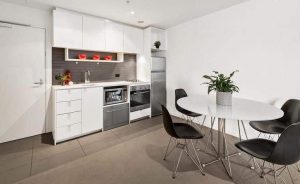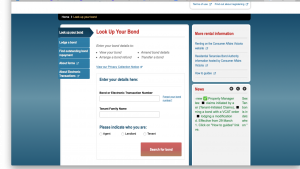Today’s topic, for me is a particularly important one–choosing a school. It’s one that I’m so enthusiastic about and I know that for most parents it’s probably one of the biggest concerns that you have when moving internationally: the children!
How are my children going to settle in Australia?
What is the Australian curriculum?
How do Australian schools compare?
As a parent myself, I understand how difficult this can be. I’ve moved my children around the world a number of times. In 2006 we moved internationally twice in the same year, hence I understand and completely relate to the concerns of parents who are moving their children internationally.
From the onset, I want to assure you, we worry a lot more than what the children do.
We are the ones that are worrying about; “Will they make friends?” “Will they settle in?”
To be honest, children live in the moment and from my own experience, they bounce pretty well. Children deal with change really well. I want to really reassure parents that as much as you might feel this is scary—moving your children around the world—you’re only scared of what you don’t know. Let me help you to better understand what lies ahead, that way, you can prepare and relax a little.
In today’s video, I hope to cover some points on how and what you can research before you arrive and how you can prepare the children. I’ll be going through some of the school options that you have available to you in Australia, the difference between those options—the different schooling streams, the costs, the budget—and what you can do to shortlist and prepare prior to your arrival.
Some of the things that I’ll discuss might feel quite obvious. But as parents, I think sometimes we also just need to be reminded to be good listeners and to understand what children need and how we can support them.
Let’s kick off with schools in Australia.
Choosing a School in Australia
As with everything in Australia, there’s a number of names for just about anything so it can be quite a minefield when you’re trying to Google. You will see words such as ELC, kindy, secondary school, high school, junior high.
These names can change depending on which state you’re in as well. Each state will have different rules and regulations. Thus, I do encourage you to check with your education authority in the state that you’ll be moving into.
Three Mainstreams Of Schooling In Australia
There are three types of schools in Australia: the State or Government schools, Semi-Private schools, and Private or Independent schools. In the following sections, I’ll be discussing their differences, mainly focusing on tuition fees, structure, zones, and so on.
School Budget
In most states and also depending on the visa that you’re on, the state schools or the government schools will be free. Places like Victoria, even if you’re on a temporary visa, the education is still free. On the other hand, in New South Wales, for example, if you are on a temporary visa – that might be a two or four-year visa – the schooling is not free. You would pay a similar fee to what you might pay at an international school or fully private school.
You will also be needing to put money aside when you start for school uniform. I would estimate you better set aside around $300 to $400.
The semi-private schools tend to be the schools that are religious-affiliated and are partially subsidised by the government. You’re probably looking between 5,000 and 8,000 AUD per year. School uniforms for a semi-private school are approximately $800 to $1000.
Fully private schools or independent schools don’t receive any government or very little government funding and they’ll be more expensive for you as a family. In Victoria or New South Wales and even Adelaide, you could be looking at anything between 8,000 to 15,000 AUD per term. School uniform for a private school could be as much as $800 to $1000.
When you’re planning your budget that some schools require that you bring your own device. So you might see on their website saying BYOD or bring your own device. They’ll stipulate what the specifications need to be for that device, whether that’s an iPad or a laptop. It’s important to keep this in mind when choosing a school in Australia.
Related Article: Moving with Children
School Structure
The structure within those schools also changes. The way the school is structured in a private school, for example, you will have a junior school, middle school and senior school; whereas in the state system you’ll have a primary school and then the secondary school or high school.
In most states, children need to be in school by their sixth birthday. In some states, it’s earlier–5th birthday.
In the State System, high school starts here when the child is between 12 and 13, and it’s compulsory up to the age of 16 although they’re usually 18 in year 12, which is the final year of school. Your child has the option to leave school after the age of 16 when it’s no longer compulsory. But generally, school here goes up to year 12 which is normally the child’s 18th birthday.
School Zones
Other things to consider with the schools if you’re going to a state school is that most of the schools are zoned by area. The zone can change. It can be anything from a two-kilometre to five or ten kilometres. The closer to the city you are, the tighter the school zones are. As you move away from the city, your school zones expand. If you’re living within a school zone, the school is obliged to take your child if it is a state school.
If you’re choosing a private school, there are no school zones neither do most semi-private schools. It gives you a little bit more flexibility when you’re trying to find a house or you’re trying to choose a school.
Options and facilities
One of the main differences between schools is the facilities. In a private school, you might find that they have a bigger athletics oval, more tennis courts or basketball. They’ll have their own swimming pool as well and a wider range of sports.
In the state system, it could be that they use the local community’s swimming pool. They have a much smaller athletics ground and they use the community sports fields as well. It’s not perhaps as convenient as what you might have in a private school, but the facilities are still there and some would argue that using the community facilities fosters a better community as you might have 2 or 3 local schools come together for practice and matches.
If you are looking for subject options, the private school sector has a lot more options for different subjects especially when you are considering high schools. If you have high school children, you definitely need to be looking at the subject choices that are available and their pathways to University.
Choosing a school can be tricky because a good experience is greatly enhanced by the teacher and child relationship. I must be honest, again as a parent, I had my children in both State and Private schooling and for the most part, we had a good experience in both systems. There were, at times, noticeable differences in the support given to the children, but for the most part, I found the teachers were all genuinely interested in the work they were doing and the outcomes. I think if I had to put my finger on it, the benchmark and expectations were different between the two schools.
What you can do to shortlist prior to arrival
Make a list of what you are looking for in a school. This should include:
- values you’re looking for in-school
- family morals and how they should carry over into the school
- subjects that you require
- the size and population of the school if it’s important to you. The population of that school is going to make a difference. Are you looking for a smaller more nurturing school? or is your child used to the international schools and is used to that culture of a school?
- the budget needs to come into it, budget usually a deciding factor in which stream of school you choose.
Also, ask yourself, which sporting opportunities or other co-curricular activities will my child need?
School Rankings
Talking about rankings, I get a lot of people who contact me and say I want this school because of the rankings. Their rankings might be the best, but that doesn’t mean that the school is the right fit for your child. Like I said, go back to the start and assess what you want from a school before you look at the rankings.
Also, remember that school websites are a marketing tool. Dive into the principal’s message on the school website and ask yourself:
- Does that sit well with what I’m looking for?
- Does the message align with my family morals and values?
Most schools these days should have their newsletters online. Reading the newsletter gives you an insight as to the language the school’s using and if they are actually going forward with what they promise on the website. If the website promotes that they have school awards or they have athletics days and swimming carnivals, then this sort of information should be in the newsletter and therefore they are actually carrying out what they promise. Unlike the website, the newsletter is not a marketing tool, you can get a feel for the school culture and what is important to them.
LOTE ( Language other than English)
Consider when shortlisting schools the language other than English that they teach. You can find that on the website and just see if that’s in line with what you want, whether you want maybe a European language or an Asian language.
I will emphasize that in primary schools here, it’s very much cultural learning as opposed to learning the actual language. So if you’ve got primary school-aged children, I wouldn’t be overly concerned about the LOTE. I made this mistake in Australia. My children have been learning French in France, so I chose the school that had French as the LOTE. Unfortunately, because they were both in junior/primary school, it was of little use.
Important Reminders
In the private and semi-private sector, most schools will have someone dedicated to the enrollment function and you can ask questions before you arrive.
However, when you’re looking at the state schools they don’t have a marketing budget or dedicated enrolment officer. Most state schools are working within a geographical zone, most are obliged to take your child if you’re living in their zone. It’s usually one of the secretaries or receptionists who deals with the enrollments so don’t be offended if they don’t respond. You’re really not going to get much out of them until you arrive in Australia with a lease in your hand and can show that you’re living in their zone. Once you’re living in their zone the doors will be open and they’ll be happy to receive you.
This is an edited version of the live video on Facebook on January 16, 2021. You may watch it below. You may also check out our book Your DIY Move Guide to Australia. It contains more schooling tips.
Personnel Relocations can help you to shortlist schools that are right for your child. We can arrange tours and support you every step of the way. Remember, we have moved with children. We understand your concerns about moving with children and the children’s emotions. Talk to us. We can guide you.
FREE download: Cost of Living and International Move Checklist







